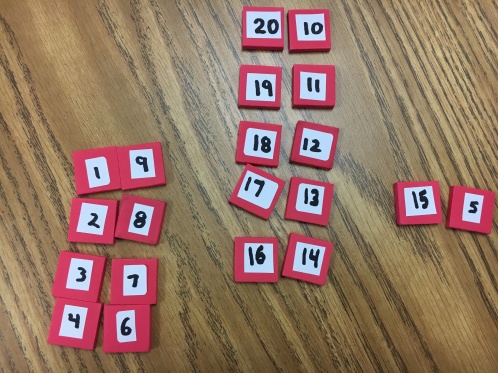For the second year in a row, I had the privilege and honor to give an ignite talk at the Georgia Math Conference (Last year’s talk can be found here.) What makes ignite talk sessions great is that you get a taste of what several speakers are passionate about and you get to walk away with at least one ember of at least one of those talks beginning to burn in you!
Special thanks to Graham Fletcher for putting this all together (in pre and post production!). Graham is top notch, “for sure” (Must be a little of my inner Canadian there).
The featured speakers this year in the order of their talk:
Me (@mikewiernicki) – I didn’t ask to go first. 🙂
<p><a href=”https://vimeo.com/190360814″>Mike Wiernicki – Ignite Talk (GCTM 2016)</a> from <a href=”https://vimeo.com/user21534889″>Graham Fletcher</a> on <a href=”https://vimeo.com”>Vimeo</a>.</p>
Katie Breedlove (@KatieBreedlove)
<p><a href=”https://vimeo.com/190362489″>Katie Breedlove – Ignite Talk (GCTM 2016)</a> from <a href=”https://vimeo.com/user21534889″>Graham Fletcher</a> on <a href=”https://vimeo.com”>Vimeo</a>.</p>
Jenise Sexton (@MrsJeniseSexton)
<p><a href=”https://vimeo.com/190364708″>Jenise Sexton – Ignite Talk (GCTM 2016)</a> from <a href=”https://vimeo.com/user21534889″>Graham Fletcher</a> on <a href=”https://vimeo.com”>Vimeo</a>.</p>
Karla Cwetna (@KCwetna)
<p><a href=”https://vimeo.com/190381786″>Karla Cwetna – Ignite Talk (GCTM 2016)</a> from <a href=”https://vimeo.com/user21534889″>Graham Fletcher</a> on <a href=”https://vimeo.com”>Vimeo</a>.</p>
Carla Bidwell (@carla_bidwell)
<p><a href=”https://vimeo.com/190286621″>Carla Bidwell – Ignite Talk (GCTM 2016)</a> from <a href=”https://vimeo.com/user21534889″>Graham Fletcher</a> on <a href=”https://vimeo.com”>Vimeo</a>.</p>
Brian Lack (@DrBrianLack)
<p><a href=”https://vimeo.com/190415942″>Brian Lack – Ignite Talk (GCTM 2016)</a> from <a href=”https://vimeo.com/user21534889″>Graham Fletcher</a> on <a href=”https://vimeo.com”>Vimeo</a>.</p>
Graham Fletcher (@gfletchy) – The great Emcee’s talk is available elsewhere. I’ll find it and link it asap.




